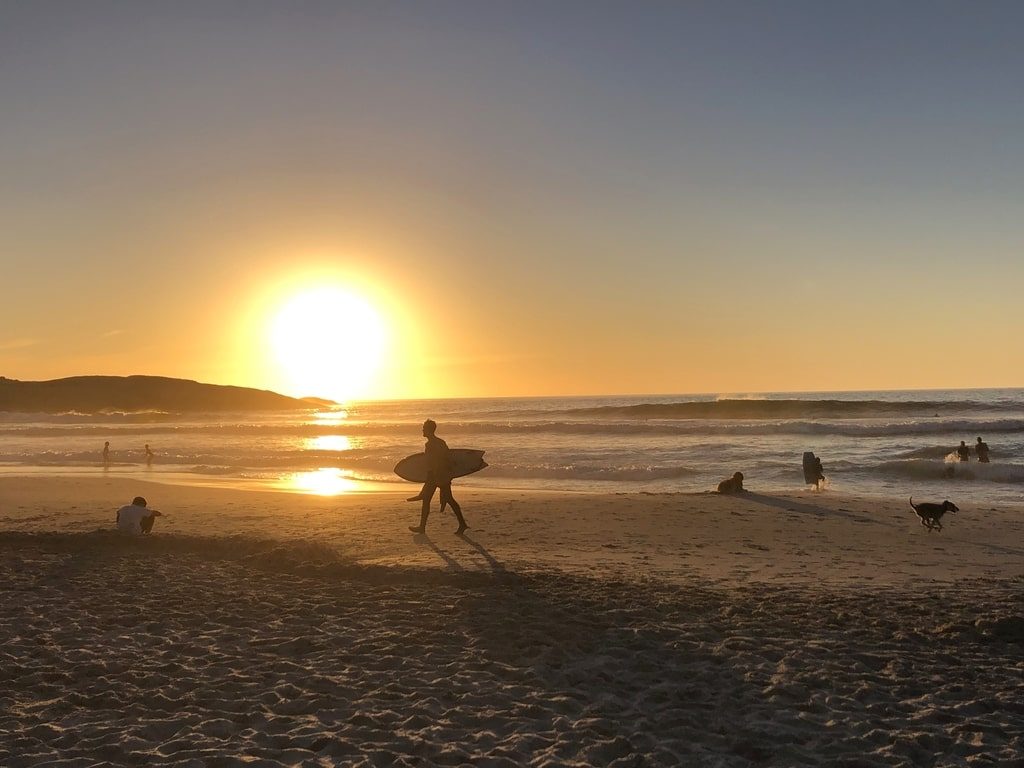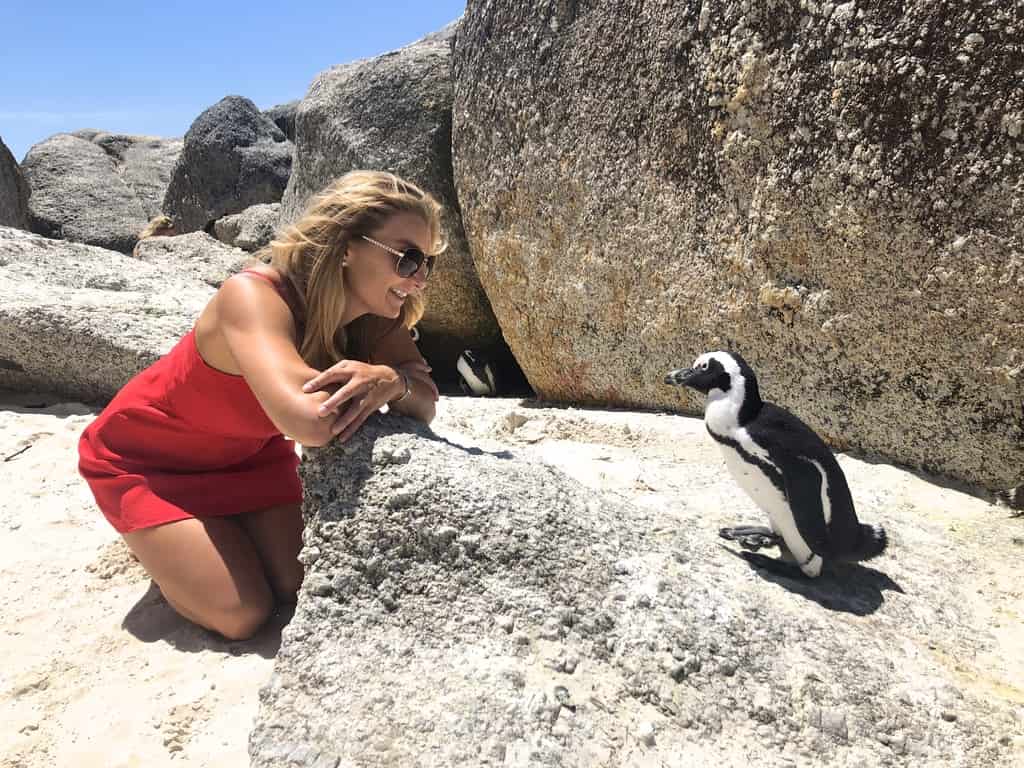
Cape Peninsula
With so many incredible experiences to look forward to during a trip to South Africa, it’s hard to narrow down one that’s most anticipated. But a visit to Boulders Beach to hang with the African penguins was definitely high on my list, so I was extremely excited for our day trip around the Cape Peninsula.
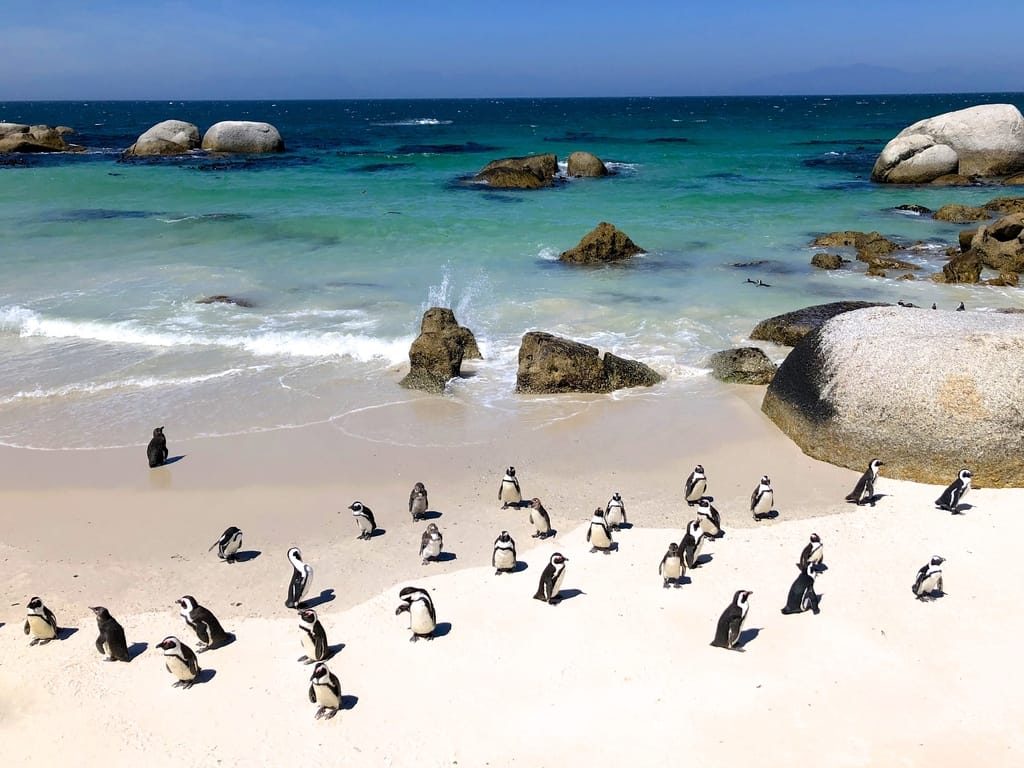
From Cape Town, this rocky peninsula stretches fifty-two kilometers south to Cape Point and the Cape of Good Hope, dividing the Atlantic Ocean and False Bay. You could spend days exploring the quaint fishing villages and beach towns along the coast (or just watching the penguins), but with limited time, we decided to drive the roughly 120km loop in one day.
Starting on the eastern side of the peninsula our first stop along the False Bay coastline was St. James Beach, backed by steep mountain peaks and known for its colorful Victorian changing huts. Popular with families thanks to the protected tidal pool where kids can swim safely, the beach was packed and the start of the summer season is still a month away!
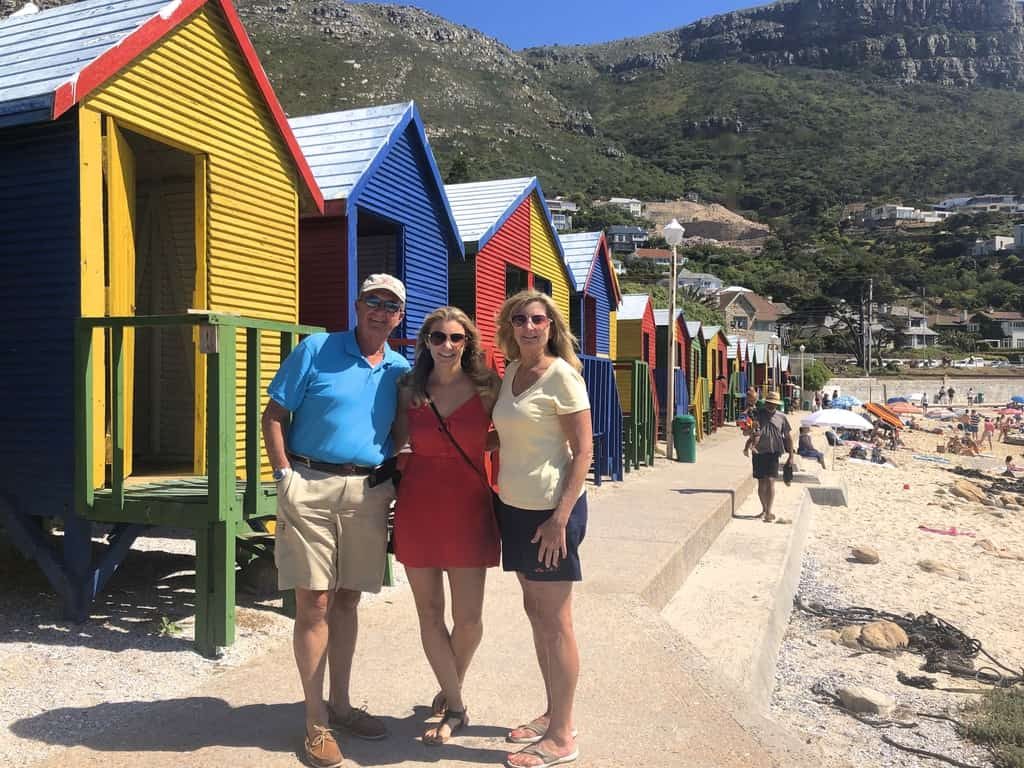
Further south along the coast lies Kalk Bay, an adorable fishing village with a main street full of funky boutique shops and cute little cafes. After a quick stroll we made our way to Kalky’s, a well-known establishment famous for it’s heaping portion of fish and chips. Even though we had basically just eaten breakfast, we couldn’t pass up the opportunity, so we saddled up at the family style picnic tables right on the harbor to share one order of the deliciously fried masterpiece.
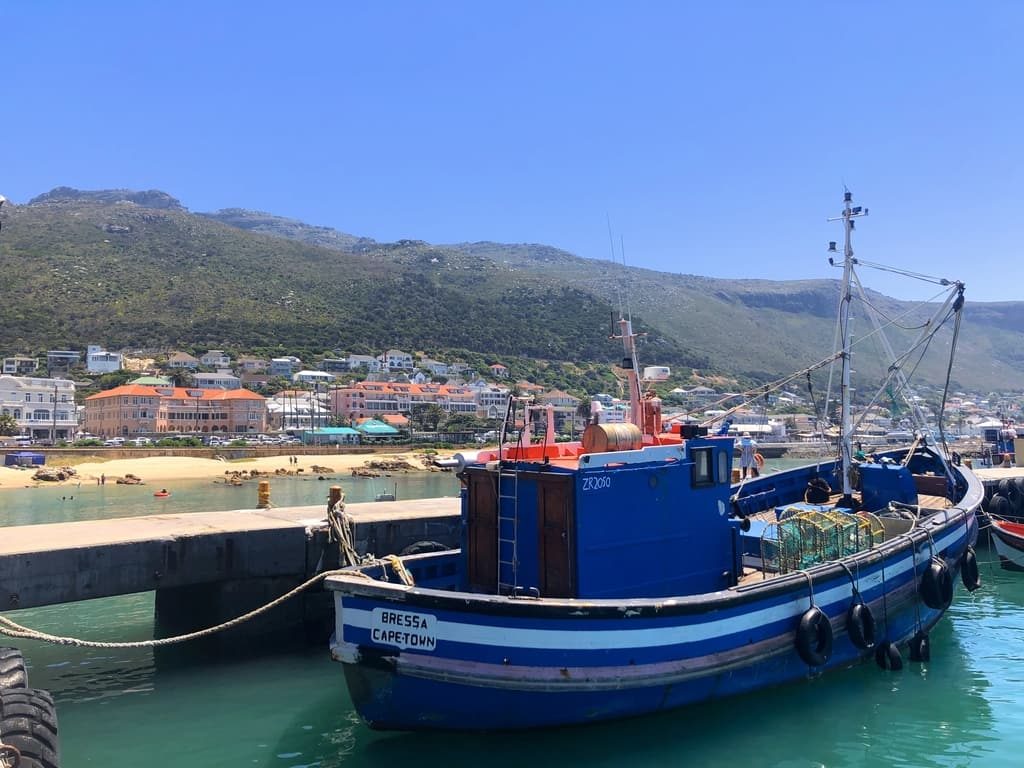
My excitement reached an all time high as we continued south through Simon’s Town to Boulders Beach. This sheltered cove of giant granite boulders and pristine white sand is an inviting escape, but the beach is more popular for its local residents than for its stunning beauty.
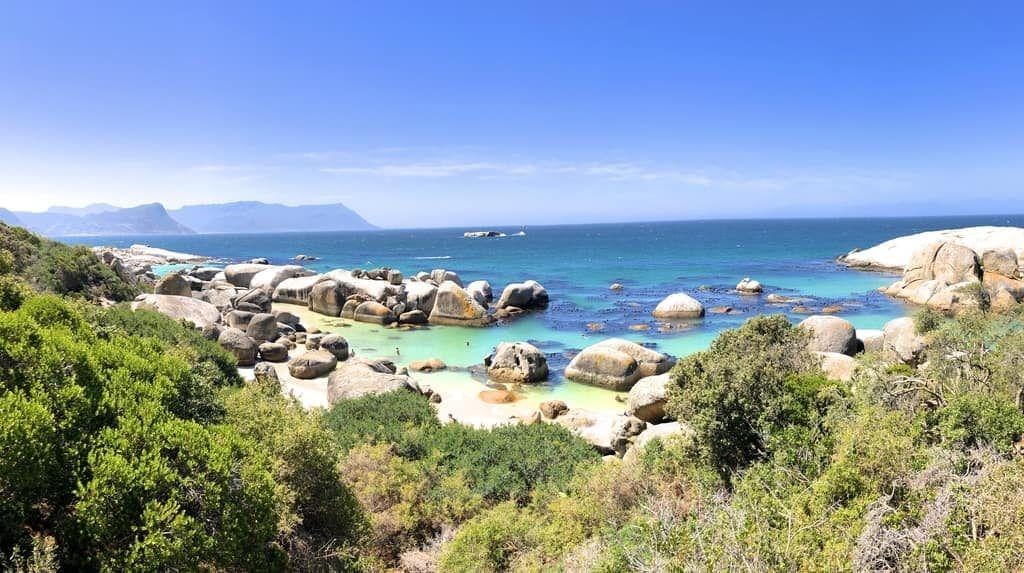
Home to a colony of about 3,000 African penguins, Boulders Beach is the only place in the world where you can get up close to this endangered species. Its Penguin time!!!
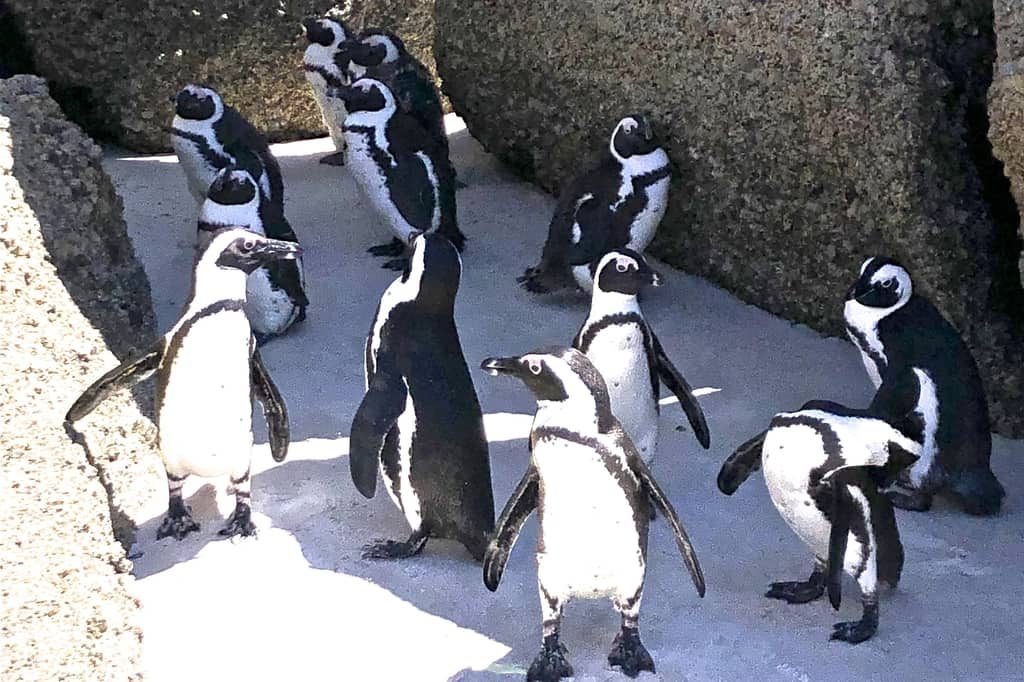
Boardwalks winding up and over the dunes lead to viewing platforms where you can watch the penguins in action as they stand together sunning themselves or waddling around the beach belly flopping into the water when it’s time for a swim. I could spend hours here watching these birds in their butler style tailcoats… this is penguin heaven.
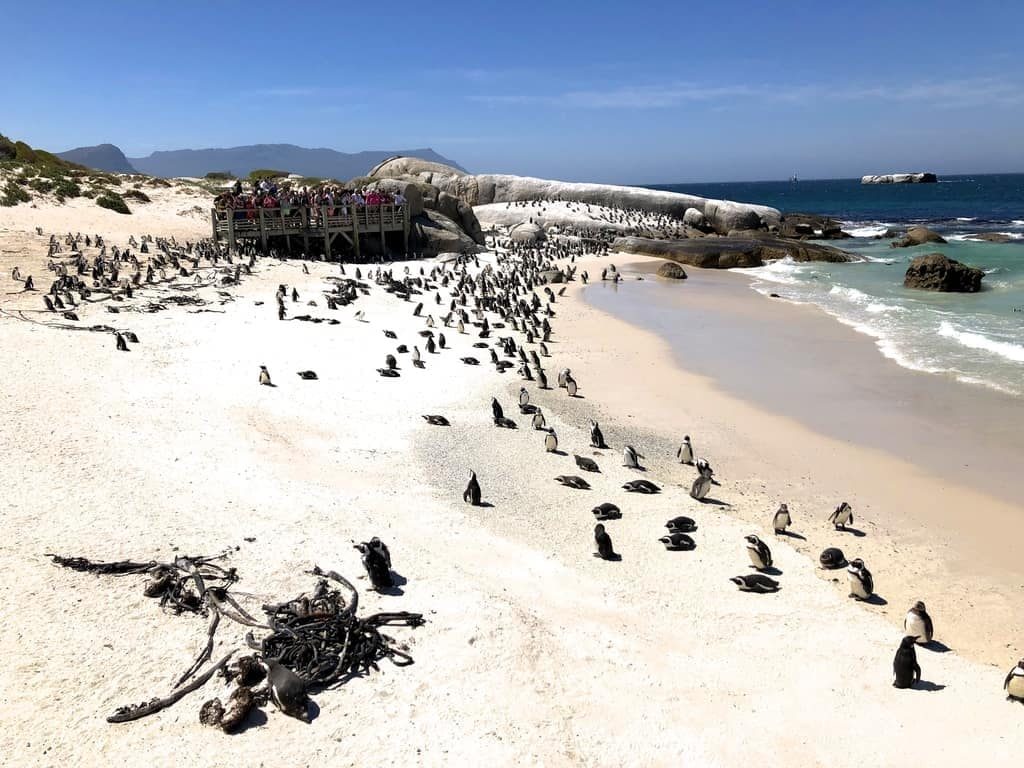
If you want a more personal interaction, head down to the beach where you can share a stretch of sand with these adorable crowd pleasers. We had to crawl through a narrow opening between two massive boulders and then scale another one to reach the protected areas where the penguins hang out, but it was more than worth the effort.
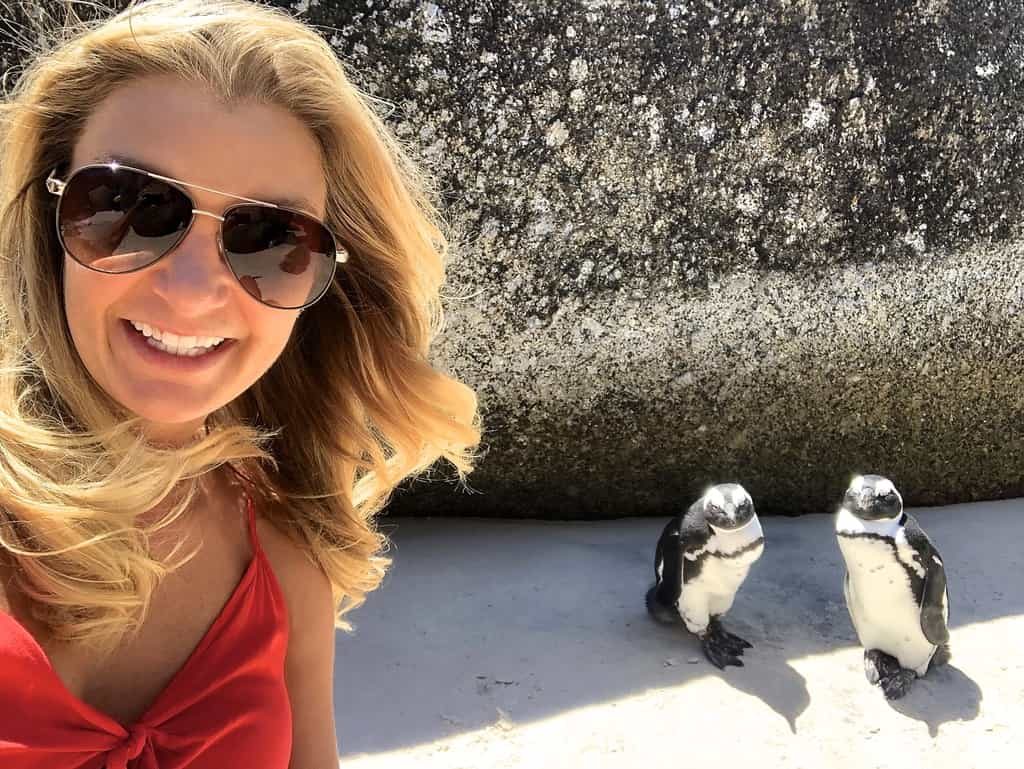
These birds definitely have personality… they almost seem to interact with you, curiously checking you out and posing for pictures. But be careful, because while they look cute, their beaks are razor sharp and they aren’t afraid to use them if they feel threatened.
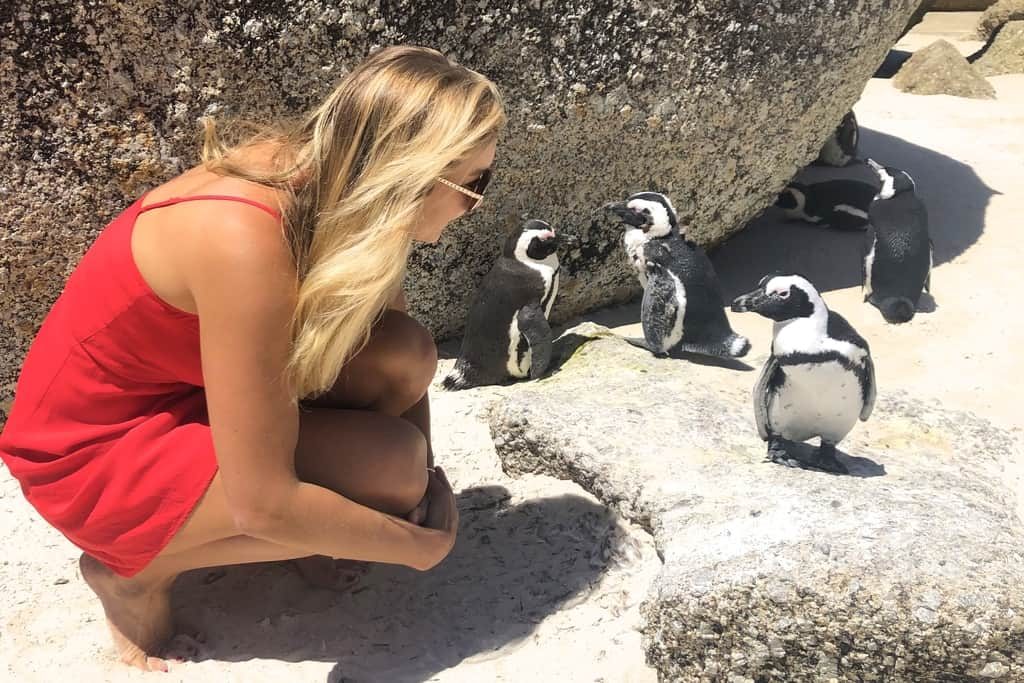
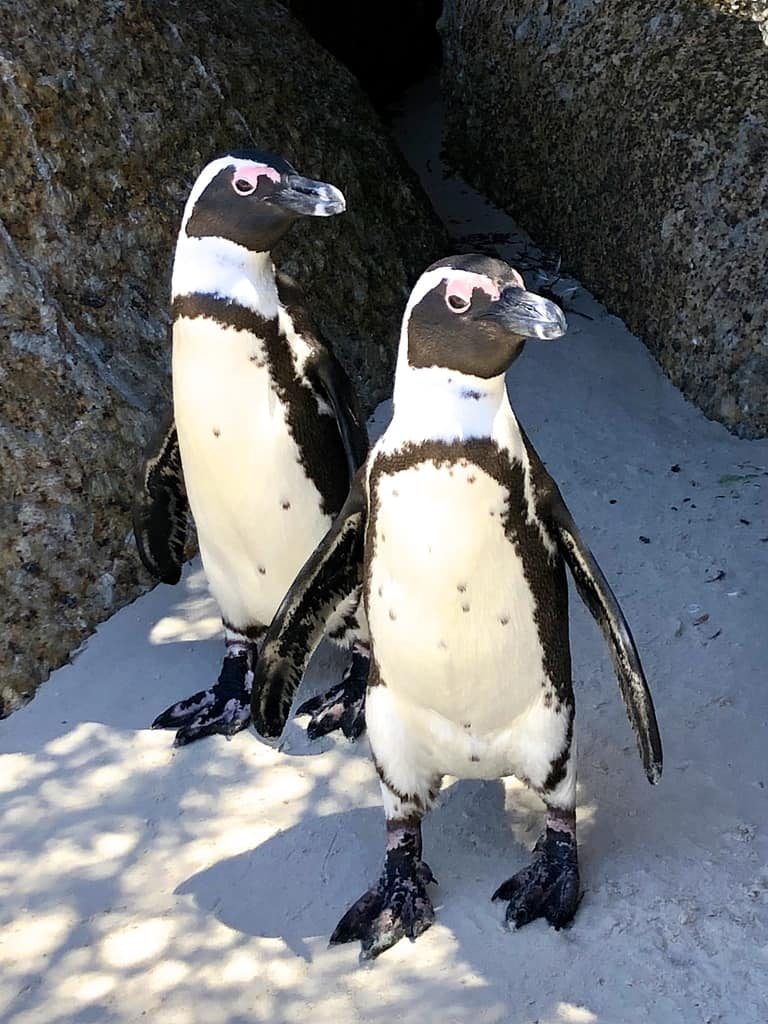
I could have spent an entire day here with these little guys, watching them preen themselves, bask in the sun and waddle around the beach like old married couples. I couldn’t get enough and wasn’t ready to leave when it was time to continue on, but…
The next stop was the Cape Point Nature Reserve, the southern tip of the Cape Peninsula. Widely believed for some time to be the meeting point of the Atlantic and Indian Oceans, that honor now officially belongs to Cape Agulhas, the southernmost tip of the African continent sitting about 160km to the southeast. But that doesn’t take much away from the rugged windswept beauty of both Cape Point and the Cape of Good Hope as their stone cliffs dramatically drop into the ocean… it feels like you’re standing on the edge of the world.
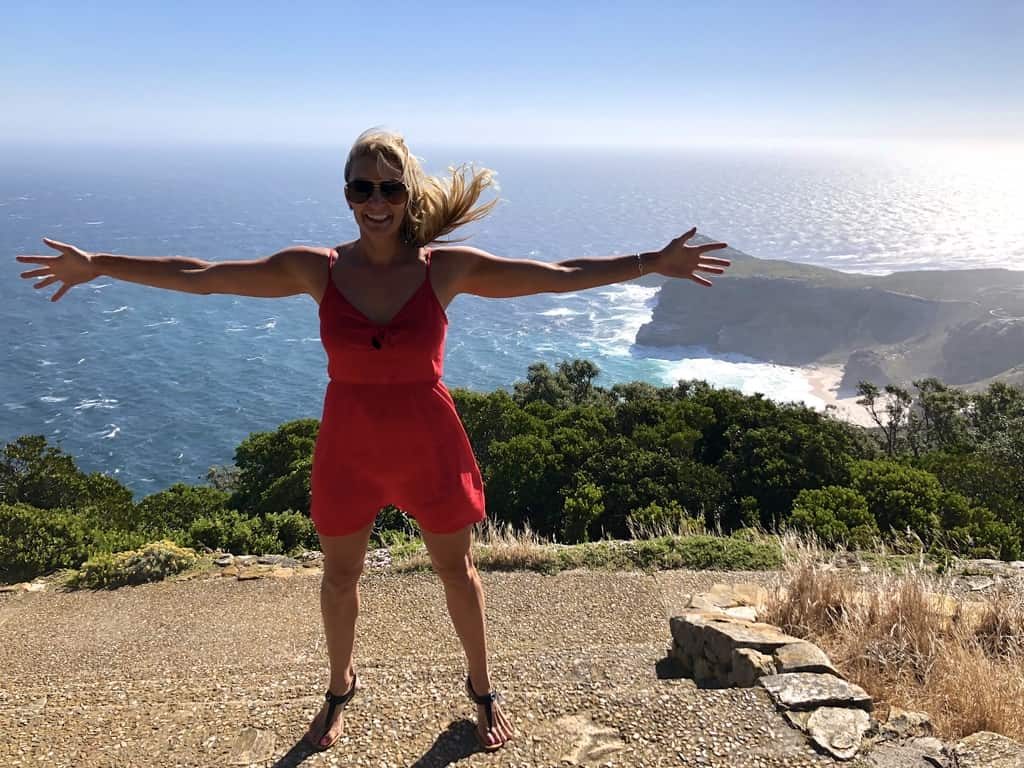

We opted for the five minute funicular ride up to Cape Point versus the steep windy walk and were almost blown away when we stepped out onto the viewing platform. I was wearing a sundress, which definitely was not the right move as I had one hand trying to keep it from blowing up above my waist and the other holding my sunglasses, which I thought were going to be swept off my face. To say it was windy would be an understatement. But the panoramic views of the ocean and peninsula coastlines were stunning and I even attempted to climb up to the lighthouse, which presented another level of windy that I couldn’t handle.
Because we were short on time, we skipped the 90 minute round trip hike down to the Cape of Good Hope where you can snap the classic pic in front of the sign that confirms you are at the “Most South-Western Point of the African Continent”. The “Most Southern Point” would be way cooler anyway, right?!?
Back in the car having escaped becoming human kites, we headed northwest across the peninsula to Noordhoek, an artistic, rural farm community on the Atlantic that’s home to one of the area’s least populated and uninterrupted stretches of white sand.
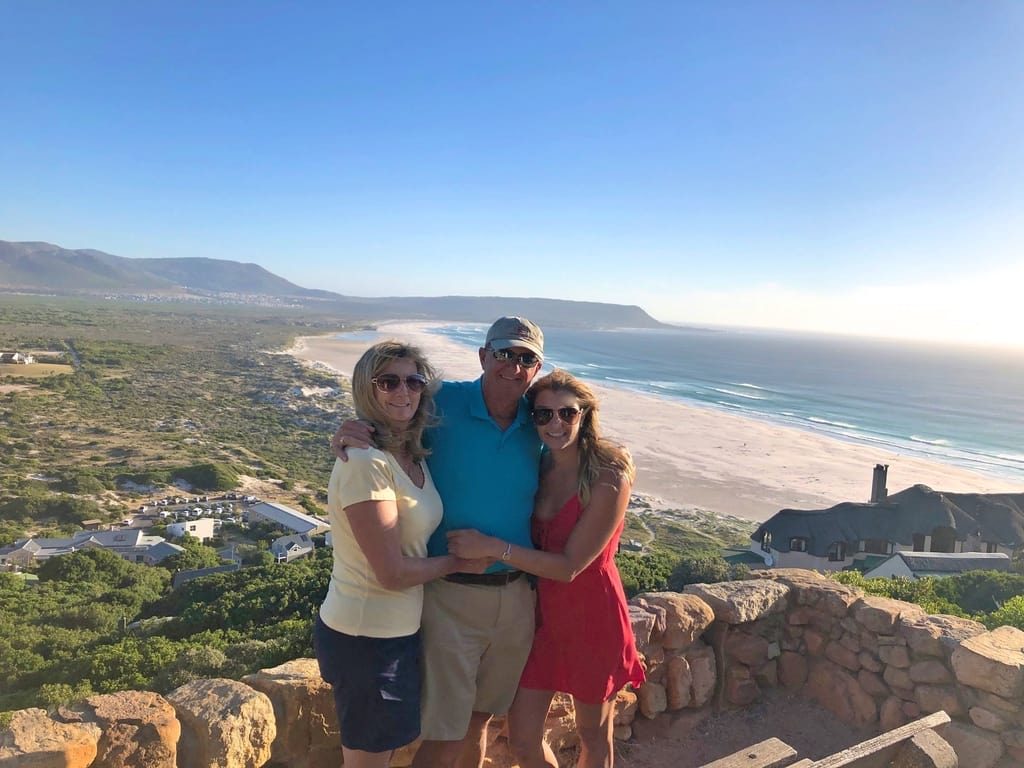
It’s also one of the bookends for Chapman’s Peak Drive, a 9km toll road that is one of the world’s most breathtaking stretches of coastal highway. As you wind around the 114 curves on steep cliffs that drop off straight into the ocean, the scenery is spectacular… if your nerves allow you to enjoy it.
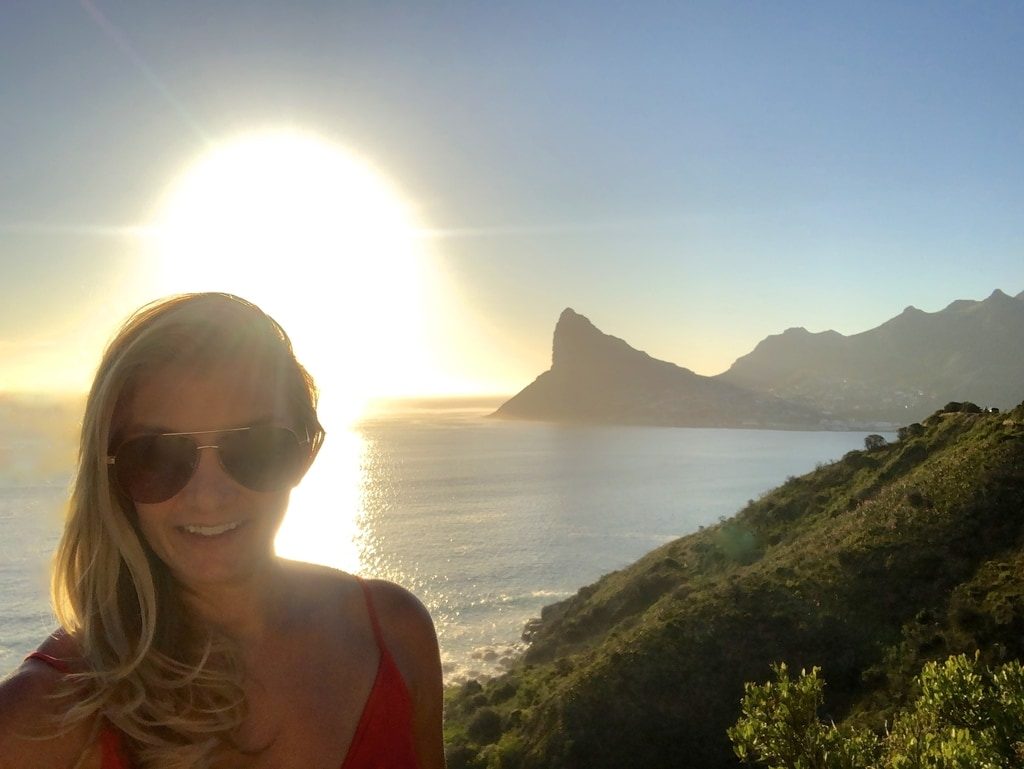
Referred to as “Chappies” by the locals, the other end of this famous Cape Town landmark is Hout Bay, a picturesque seaside fishing village.
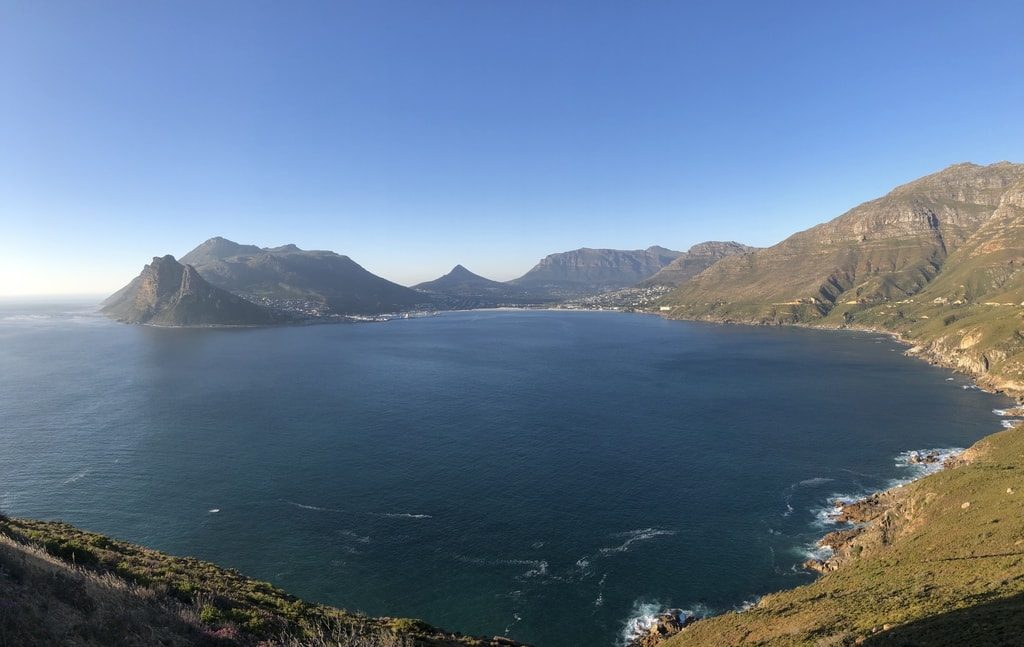
We continued north along the Atlantic coast as the sun continued to creep towards the horizon. It was perfect timing as we arrived in Llandudno, a wealthy residential suburb lying in the shadow of the mountains with a crescent shaped beach known as one of Cape Town’s most beautiful and unspoiled. No shops, restaurants or even street lights keep this coastal community private and exclusive.
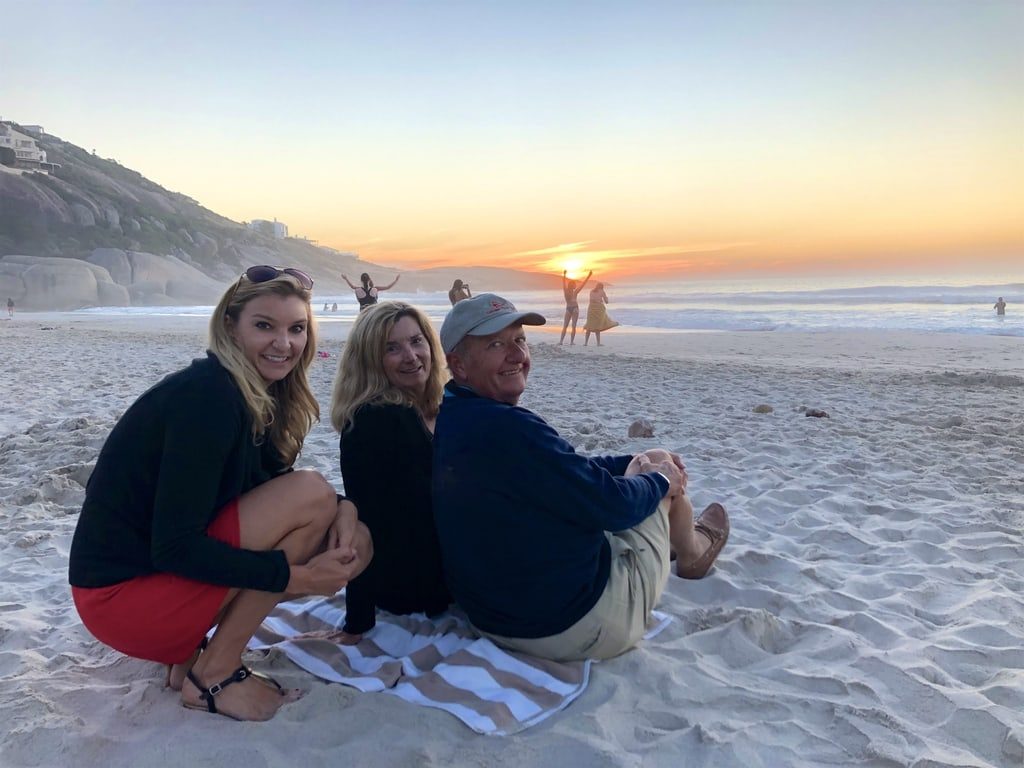
We were lucky to find one of the few parking spots available and hiked down to the beach for the sunset. It was the perfect ending to a fun filled day exploring the Cape Peninsula.
